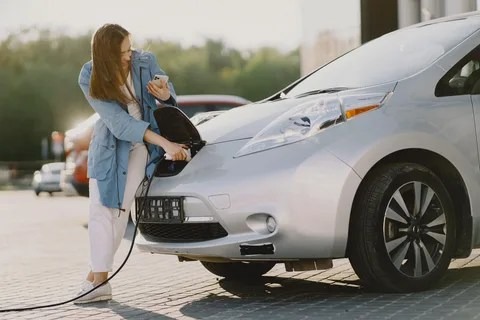In the ever-evolving landscape of transportation, electric vehicles (EVs) have emerged as a promising solution to address environmental concerns and reduce dependency on fossil fuels. One critical aspect of EV ownership is understanding the time it takes to charge these vehicles. Unlike traditional gas-powered cars, EVs rely on electricity as their fuel source, necessitating access to charging stations for recharging. The duration required for charging an EV varies depending on several factors, including the type of charger, battery capacity, and charging infrastructure. In this comprehensive guide, we delve into the intricacies of EV charging times to provide a clear understanding for both current and prospective EV owners. Explore more about how long does it take to charge an electric vehicle
Understanding EV Charging Levels
- Level 1 Charging:
- Level 1 charging involves plugging the EV into a standard household outlet using the charging cord provided with the vehicle.
- Typically, Level 1 chargers deliver power at a rate of about 2-5 miles of range per hour of charging.
- While convenient for overnight charging at home, Level 1 charging is the slowest option available and may not suffice for users with high daily driving requirements.
- Level 2 Charging:
- Level 2 chargers require a dedicated charging station, commonly installed in homes, workplaces, and public locations.
- These chargers operate at higher voltages and currents compared to Level 1, offering charging speeds ranging from 10 to 60 miles of range per hour.
- Level 2 chargers are ideal for daily charging needs, providing a faster and more efficient charging experience than Level 1 alternatives.
- DC Fast Charging (Level 3):
- DC fast chargers, also known as Level 3 chargers, are primarily found in public charging stations along highways and major routes.
- These chargers supply electricity directly to the vehicle's battery, enabling rapid charging rates.
- Depending on the EV model and charger specifications, DC fast chargers can replenish 60-80% of the battery capacity in approximately 20-30 minutes, making them suitable for long-distance travel and quick top-ups.
Factors Influencing Charging Times
- Battery Capacity:
- The size and capacity of an EV's battery pack significantly influence charging times.
- Vehicles with larger batteries require more time to recharge compared to those with smaller batteries, regardless of the charging speed.
- High-capacity batteries, commonly found in luxury EVs and long-range models, may take several hours to fully charge, even with fast charging options.
- State of Charge (SOC):
- Charging times can vary based on the current state of charge of the battery.
- Rapid charging speeds are typically observed when the battery is at a low SOC, gradually tapering off as it approaches full capacity.
- EVs often employ charging algorithms to optimize the charging process and minimize degradation, adjusting the charging rate based on factors such as temperature and battery condition.
- Charging Infrastructure:
- The availability and accessibility of charging infrastructure play a crucial role in determining charging times.
- Urban areas and regions with robust charging networks offer more options for EV owners, reducing wait times and enhancing convenience.
- The proliferation of fast-charging stations, including Tesla's Supercharger network and third-party providers, has significantly improved the feasibility of long-distance travel with EVs.
Real-World Examples
- Tesla Supercharger Network:
- Tesla's proprietary Supercharger network is renowned for its widespread coverage and rapid charging speeds.
- Tesla vehicles, such as the Model S and Model 3, can achieve charging rates of up to 200 miles of range in approximately 15-20 minutes using Superchargers.
- This extensive network, strategically located along major highways and popular routes, enables seamless long-distance travel for Tesla owners.
- Public Charging Stations:
- Public charging stations operated by third-party providers offer varying charging speeds and pricing models.
- While DC fast chargers deliver rapid charging, Level 2 stations are more common in urban areas and workplaces, providing convenient charging solutions for daily commuters.
- Charging times at public stations can range from 30 minutes to several hours, depending on factors such as charger availability, power output, and EV compatibility.
Conclusion
In the realm of electric vehicles, understanding charging times is essential for optimizing the ownership experience and effectively managing travel plans. From Level 1 home charging to high-speed DC fast charging, EV owners have access to a diverse range of charging options tailored to their needs. As charging infrastructure continues to expand and battery technology advances, the future of EV charging holds the promise of even faster and more efficient charging solutions, further cementing the transition towards sustainable transportation. Visit the official webiste of heliomtech.com

